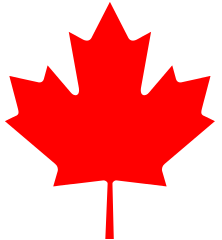Canada Sees Surge in Mobile, Contactless Payments
 Canada’s payments system is undergoing a rapid transition, with mobile P2P, e-wallet and contactless transactions on the rise, according to a report from the Canadian Payments Association (CPA). The industry group gathered 2014 payments data from financial services providers, consultants and researchers, publishing its findings in its latest Canadian Payment Methods and Trends report. While traditional forms of payment, such as cash, checks and credit cards, still comprised the majority of Canadian payments, the report found “fast growth” in the number of transactions using emerging payments types, including e-wallets, contactless and e-commerce portals.
Canada’s payments system is undergoing a rapid transition, with mobile P2P, e-wallet and contactless transactions on the rise, according to a report from the Canadian Payments Association (CPA). The industry group gathered 2014 payments data from financial services providers, consultants and researchers, publishing its findings in its latest Canadian Payment Methods and Trends report. While traditional forms of payment, such as cash, checks and credit cards, still comprised the majority of Canadian payments, the report found “fast growth” in the number of transactions using emerging payments types, including e-wallets, contactless and e-commerce portals.
E-wallet payments and P2P transfers accounted for nearly 82 million payments during the year. Such payments—dubbed “online transfers” in the report—represented the fastest-growing payment type in Canada, up 184 percent in volume and 228 percent in value since 2011. Contactless was another major trend noted in the report. There were more than 650 million contactless transactions (via card or mobile device tap) in Canada in 2014—or approximately 7 percent of all debit and credit card payments, the report found. Contactless payments in Canada have been driven largely by the country’s telecom providers, including Rogers Communications, whose Paybefore Award-winning suretap mobile wallet last year added backing from a number of other wireless providers. Several Canadian banks also offer proprietary wallets, and Apple Pay rolled out in the country in November.
Prepaid cards also made a strong showing in the CPA’s report, with prepaid transactions up an average of 9 percent annually over the six years between 2008 and 2014. Prepaid transaction volume increased an average of 5 percent each year over that period. Last summer, Canada’s leading payments players formed the Canadian Prepaid Providers Organization, an industry group tasked with supporting development of the country’s prepaid sector via education and outreach to the public and government.
Related stories:











































